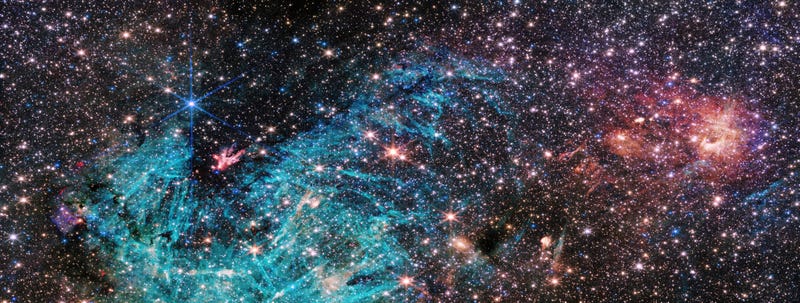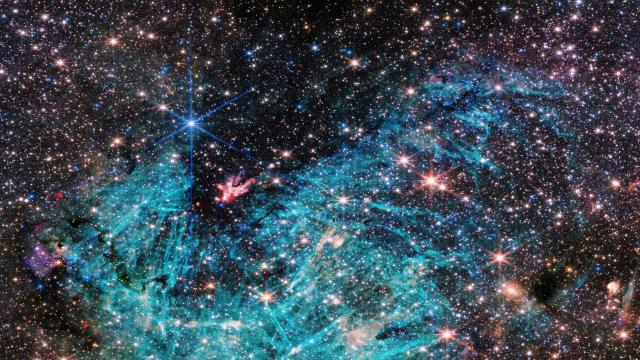The center of our galaxy is a menagerie of exotic objects; a supermassive black hole, clouds of hot gas, and giant stars that can help inform the origin story of much of the universe. Using the Webb telescope, scientists got to see this chaotic region of the Milky Way in a different light, revealing new features and incredible detail in a glimmering portrait of the galactic centre.
The latest image from the Webb Space Telescope captured a portion of the Milky Way’s dense core, including the star-forming region Sagittarius C (Sgr C), which lies about 300 light-years away from the supermassive black hole, Sagittarius A*. The Milky Way centre is around 25,000 light-years away from Earth, close enough to observe star formation in the extreme environment.
“There’s never been any infrared data on this region with the level of resolution and sensitivity we get with Webb, so we are seeing lots of features here for the first time,” Samuel Crowe, an undergraduate student at the University of Virginia in Charlottesville, and the observation team’s principal investigator, said in a statement.

This gorgeous view of the center of the Milky Way is packed with detail, so let’s break it down.
The full view is 50 light-years-wide, revealing an estimated 500,000 stars sprinkled across the canvas. Among them is a cluster of protostars, or baby stars, that are still forming and gaining mass and in the process producing massive outflows of gas that are glowing against the dark background. In the middle of the cluster lies a massive protostar that’s over 30 times the mass of the Sun.
The stars are about to emerge from the base of the cloud to join their grown counterparts. The main cloud from which the protostars are forming is so dense that it’s actually blocking the light from stars behind it. This region is in fact a lot more crowded than it appears, making up the most densely packed areas of the entire image. There are smaller dark clouds across the image, appearing as silent breaks amidst the chaos.
The splash of cyan to the left is large-scale emission of ionized hydrogen as it wraps around a dark cloud, stretching across 25 light years. Ionized hydrogen could be the result of energetic photons being emitted by young massive stars. The massive extent of this region, however, is unusual and needs to be investigated, according to NASA.
Another curious feature of the Webb image are needle-like structures in the ionized hydrogen that are oriented in different directions. “The galactic center is a crowded, tumultuous place,” Rubén Fedriani, a co-investigator of the project at the Instituto Astrofísica de Andalucía in Spain, said in a statement. “There are turbulent, magnetized gas clouds that are forming stars, which then impact the surrounding gas with their outflowing winds, jets, and radiation.”
“Webb has provided us with a ton of data on this extreme environment, and we are just starting to dig into it,” he added.
